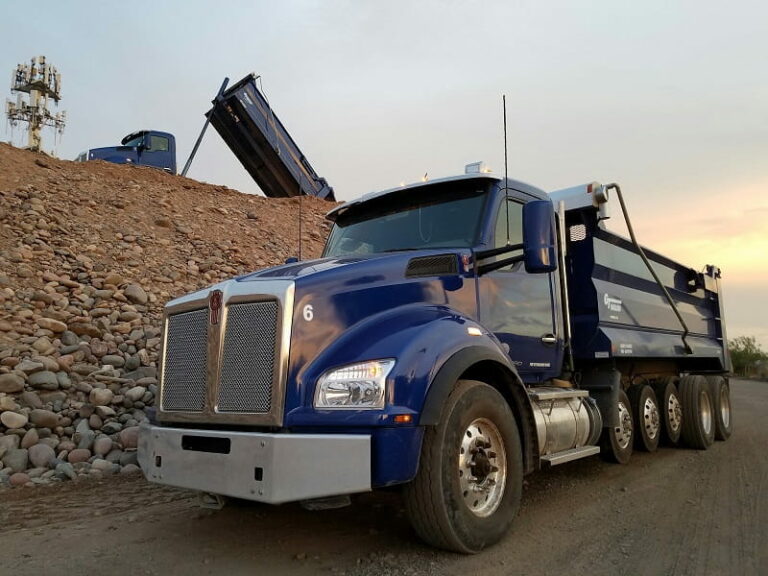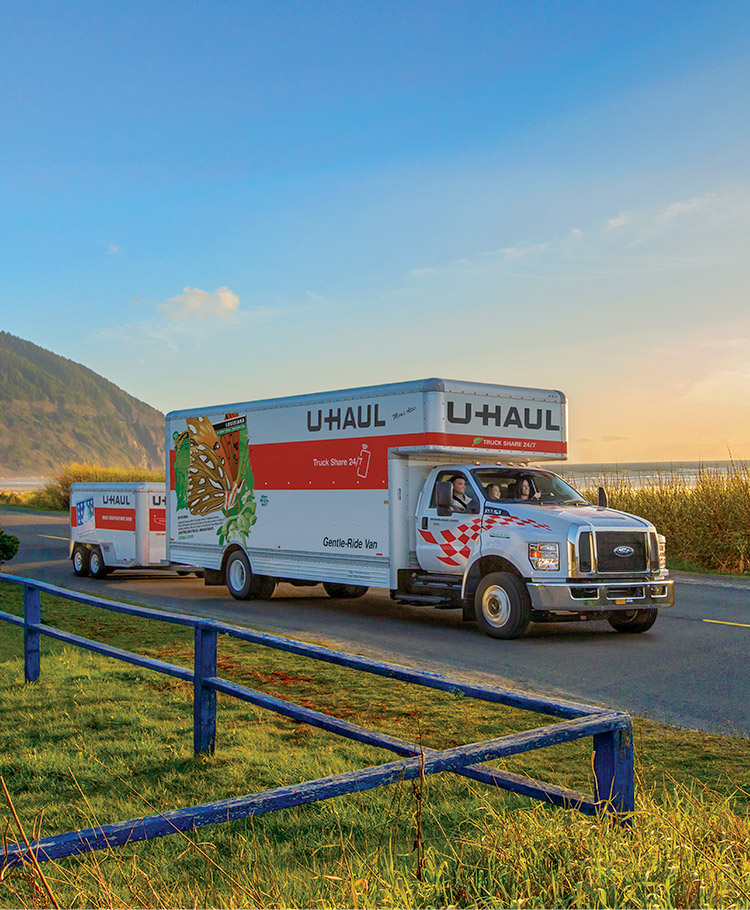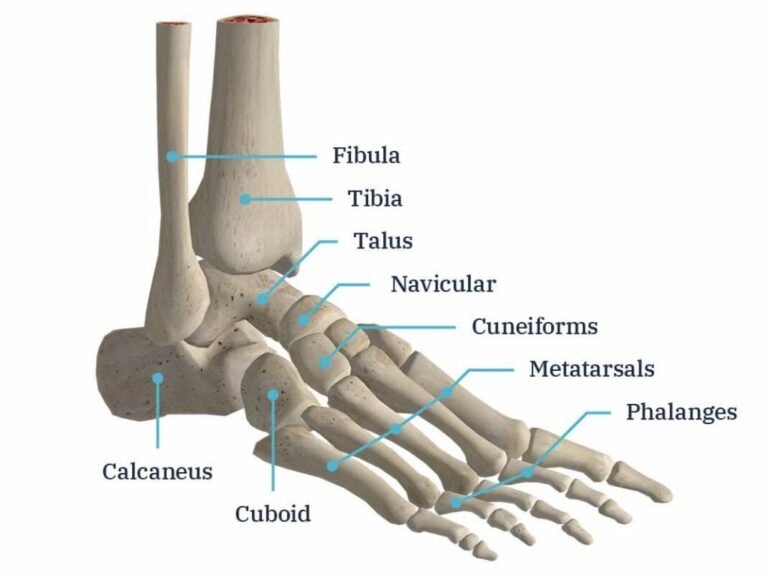U-Haul Truck Sizes: Your Ultimate Guide to Choosing the Perfect Moving Vehicle
U-Haul Truck Sizes: Your Ultimate Guide to Choosing the Perfect Moving Vehicle cars.truckstrend.com
Moving, whether across town or cross-country, is often cited as one of life’s most stressful events. Amidst the packing, organizing, and logistical acrobatics, one decision looms large: choosing the right moving truck. For millions, U-Haul is the go-to solution, offering a diverse fleet of vehicles designed to accommodate moves of all scales. However, navigating the array of U-Haul truck sizes can feel overwhelming. Selecting the perfect size isn’t just about fitting your belongings; it’s about optimizing efficiency, saving money, ensuring safety, and minimizing stress.
This comprehensive guide will demystify U-Haul’s truck sizes, providing a detailed breakdown of each option, practical advice for making your choice, and insights to ensure a smooth and successful moving experience. From compact cargo vans to colossal 26-foot trucks, understanding the capabilities and limitations of each vehicle is the first step toward a hassle-free relocation.
U-Haul Truck Sizes: Your Ultimate Guide to Choosing the Perfect Moving Vehicle
The Spectrum of U-Haul Truck Sizes: An Overview
U-Haul offers a graduated range of moving trucks, each designed to cater to specific moving needs. The core principle is simple: match the volume of your belongings to the cubic capacity of the truck. Too small, and you risk multiple trips, increased fuel costs, and wasted time. Too large, and you’ll pay for unused space, deal with a more challenging driving experience, and potentially face higher fuel consumption.
The fleet includes pickup trucks, cargo vans, and a series of box trucks ranging from 10 feet to 26 feet in length. Each size comes with distinct features, typical capacities, and ideal use cases. Let’s delve into the specifics of each option.
Detailed Breakdown of U-Haul Truck Sizes
Understanding the nuances of each U-Haul truck size is crucial for an informed decision. Here’s what you need to know:
1. U-Haul Pickup Truck
- Capacity: Best for very small loads, local deliveries, or hauling items like mulch, lumber, or a single large appliance. Not suitable for moving an entire household.
- Approximate Interior Dimensions (Bed): Varies by model, but typically around 8′ L x 5′ W.
- Key Features: Open bed, hitch for towing trailers.
- Ideal Use Cases: Hauling a few pieces of furniture, picking up new appliances, garden projects, college dorm moves where only a few items are needed.
- Considerations: Open bed means items are exposed to weather and require secure tie-downs. Limited space.

![]()
2. U-Haul Cargo Van
- Capacity: Equivalent to a small studio apartment, dorm room, or several large appliances. Approximately 245 cubic feet.
- Approximate Interior Dimensions (Cargo Area): 9′ 6" L x 5′ 7" W x 4′ 5" H.
- Key Features: Enclosed cargo space, low loading deck, easy to maneuver.
- Ideal Use Cases: Moving a studio or small 1-bedroom apartment, transporting large furniture items (sofa, queen mattress), commercial deliveries, or clearing out a storage unit.
- Considerations: No ramp, so heavier items need to be lifted. Great for city driving and parking.

3. U-Haul 10′ Truck
- Capacity: Designed for a studio or 1-bedroom apartment. Roughly 402 cubic feet.
- Approximate Interior Dimensions (Box): 9′ 11" L x 6′ 4" W x 6′ 2" H.
- Key Features: Padded interior, rub rails for tying down items, EZ-Load ramp (a significant advantage for heavy items).
- Ideal Use Cases: Small apartment moves, college students, moving a few rooms of furniture, or clearing a substantial storage unit.
- Considerations: The smallest U-Haul truck with a ramp, making it much easier to load furniture and appliances. Still relatively easy to drive and park.
4. U-Haul 15′ Truck
- Capacity: The most popular U-Haul truck size, perfect for a 1-2 bedroom home or apartment. Approximately 764 cubic feet.
- Approximate Interior Dimensions (Box): 14′ 6" L x 7′ 8" W x 7′ 2" H.
- Key Features: Low loading deck, EZ-Load ramp, cab seating for three, Mom’s Attic (an overhead storage space above the cab, ideal for fragile items or boxes).
- Ideal Use Cases: Moving a small to medium-sized home, two-bedroom apartments, or larger storage units.
- Considerations: A good balance of capacity and maneuverability. The Mom’s Attic is a game-changer for maximizing space.
5. U-Haul 17′ Truck
- Capacity: Suited for a 2-3 bedroom home or larger apartment. Approximately 865 cubic feet.
- Approximate Interior Dimensions (Box): 16′ 6" L x 7′ 8" W x 7′ 2" H.
- Key Features: Similar to the 15′ truck but with more length, including an EZ-Load ramp and Mom’s Attic.
- Ideal Use Cases: Slightly larger 2-bedroom homes or typical 3-bedroom homes with average furnishings. When the 15′ truck feels just a bit too small.
- Considerations: Offers that extra bit of space without a significant jump in driving difficulty from the 15′.
6. U-Haul 20′ Truck
- Capacity: Designed for a 3-4 bedroom home. Approximately 1,016 cubic feet.
- Approximate Interior Dimensions (Box): 19′ 6" L x 7′ 8" W x 7′ 2" H.
- Key Features: Low loading deck, EZ-Load ramp, Mom’s Attic, cab seating for three.
- Ideal Use Cases: Larger homes, or when you have bulky items like king-sized beds, large dining sets, or multiple appliances.
- Considerations: This is where trucks start to feel substantial. Requires more awareness for turns, parking, and overhead clearances.
7. U-Haul 26′ Truck
- Capacity: The largest U-Haul truck, ideal for a 4+ bedroom home. Approximately 1,586 cubic feet.
- Approximate Interior Dimensions (Box): 26′ 0" L x 8′ 2" W x 8′ 3" H.
- Key Features: Maximum capacity, low loading deck, EZ-Load ramp, Mom’s Attic, cab seating for three.
- Ideal Use Cases: Large family homes, moving multiple households, or when you simply have a lot of stuff.
- Considerations: This is a very large vehicle. Driving requires significant attention, especially in urban areas, tight turns, and parking. Fuel efficiency will be lower.
Key Factors in Choosing the Right U-Haul Truck Size
Beyond the basic capacity, several other factors should influence your decision:
- Volume of Belongings: This is paramount. Don’t just count rooms; estimate the actual volume of items. Consider large furniture, appliances, and the number of boxes. When in doubt, it’s often better to go slightly larger than too small to avoid the hassle of multiple trips.
- Type of Items: Are you moving bulky, irregularly shaped items like grand pianos, oversized sofas, or large appliances? These might dictate a larger truck even if your overall volume isn’t massive.
- Distance of Move: For local moves, multiple trips with a smaller truck might be feasible if the cost savings are significant. For one-way, long-distance moves, choosing the right size upfront is critical to avoid additional charges or logistical nightmares.
- Loading and Unloading Space: Consider your driveway size, street parking availability, and accessibility at both ends of your move. A massive 26′ truck might be challenging to maneuver in a tight urban street or small cul-de-sac.
- Driving Comfort and Experience: If you’re not accustomed to driving large vehicles, opting for a slightly smaller truck that you’re comfortable with could reduce stress, even if it means a tighter fit.
- Budget: While going larger costs more initially, consider the hidden costs of a too-small truck: extra fuel for multiple trips, additional time spent, and potential re-rentals.
Practical Advice for Your U-Haul Rental
- Estimate Meticulously: Go room by room and make an inventory. Visualize how items will fit. U-Haul’s website offers helpful tools and calculators to estimate the right size based on your inventory.
- Pack Smart: Proper packing can maximize space. Use uniform-sized boxes, pack heavy items in smaller boxes, and disassemble furniture when possible.
- Load Strategically: Place heavy, bulky items at the bottom and center of the truck, over the axles, to ensure stability. Distribute weight evenly. Use moving blankets to protect furniture and tie-downs to secure everything.
- Drive Defensively: Remember you’re driving a much larger, heavier vehicle. Allow extra braking distance, take wide turns, and be mindful of overhead clearances (bridges, low-hanging branches, drive-thrus).
- Book Early: Especially during peak moving seasons (summer, end of month), U-Haul trucks are in high demand. Reserve your desired size well in advance.
- Inspect Before You Go: Before driving off, do a quick walk-around. Check for existing damage, ensure tires are properly inflated, and familiarize yourself with the controls. Understand the fuel policy (usually returned with the same amount as picked up).
U-Haul Truck Sizes at a Glance (Estimated Information)
The table below provides a concise summary of U-Haul’s truck fleet. Please note that pricing is highly variable and depends on factors such as location (pickup and drop-off), availability, time of year, duration of rental, and whether it’s a local or one-way move. The "Estimated Cost Considerations" are general guidelines and you must check the U-Haul website or directly contact a U-Haul location for accurate, real-time pricing.
| Truck Size | Estimated Capacity | Approximate Interior Dimensions (L x W x H) | Key Features | Typical Use Cases | Estimated Cost Considerations (Highly Variable) |
|---|---|---|---|---|---|
| Pickup Truck | Small loads, single items | Bed: ~8′ L x 5′ W | Open bed, towing hitch | Hauling materials, single large appliance | Lowest starting daily rate. Plus mileage. Best for short, local tasks. |
| Cargo Van | Studio/Small 1-Bedroom | 9′ 6" L x 5′ 7" W x 4′ 5" H | Enclosed, low deck, easy to drive | Dorms, studio apartments, commercial deliveries | Low daily rate. Plus mileage. Fuel-efficient for its size. |
| 10′ Truck | Studio / 1-Bedroom | 9′ 11" L x 6′ 4" W x 6′ 2" H | EZ-Load ramp, padded interior | Small apartments, few furniture pieces, storage | Affordable daily rate. Plus mileage. Good value for small moves needing a ramp. |
| 15′ Truck | 1-2 Bedroom Home/Apt | 14′ 6" L x 7′ 8" W x 7′ 2" H | EZ-Load ramp, Mom’s Attic, 3-person cab | Most popular for average home moves | Mid-range daily rate. Plus mileage. Often the sweet spot for cost vs. capacity. |
| 17′ Truck | 2-3 Bedroom Home/Apt | 16′ 6" L x 7′ 8" W x 7′ 2" H | EZ-Load ramp, Mom’s Attic, 3-person cab | Slightly larger homes, when 15′ is too small | Slightly higher than 15′. Plus mileage. Incremental cost for extra space. |
| 20′ Truck | 3-4 Bedroom Home/Apt | 19′ 6" L x 7′ 8" W x 7′ 2" H | EZ-Load ramp, Mom’s Attic, 3-person cab | Medium to large homes, substantial belongings | Higher daily rate. Plus mileage. Fuel efficiency starts to decrease. |
| 26′ Truck | 4+ Bedroom Home/Apt | 26′ 0" L x 8′ 2" W x 8′ 3" H | Largest capacity, EZ-Load ramp, Mom’s Attic | Large family homes, multiple households | Highest daily rate. Plus mileage. Significant fuel consumption. Most expensive overall rental due to size and potential one-way mileage costs. |
Disclaimer on Pricing: The prices listed above are estimated considerations and not actual, fixed prices. U-Haul’s pricing model is dynamic, fluctuating based on demand, location, time of year, and whether the rental is local or one-way. Always obtain a direct quote from the U-Haul website or a local U-Haul representative for precise pricing for your specific move.
Frequently Asked Questions (FAQ)
Q1: Do I need a special driver’s license to drive a U-Haul truck?
No, U-Haul trucks are designed to be driven with a standard Class D driver’s license (the typical license for passenger vehicles) in the U.S. and Canada.
Q2: What’s included with a U-Haul truck rental?
Rentals typically include the truck itself. Moving supplies (boxes, dollies, blankets) and additional insurance coverage are separate add-ons.
Q3: Do U-Haul trucks have automatic transmission?
Yes, all U-Haul trucks come with automatic transmissions, making them easier to drive for most people.
Q4: Are there mileage limits on U-Haul rentals?
For local rentals, there is usually a per-mile charge in addition to the daily rate. For one-way rentals, a certain number of estimated miles are included, and you will be charged for any miles exceeding that allowance.
Q5: What about fuel? Do I need to fill it up?
U-Haul typically requires you to return the truck with the same fuel level as when you picked it up. If not, you will be charged for the fuel difference plus a refueling service fee.
Q6: Can I tow my car or a trailer with a U-Haul truck?
Most U-Haul box trucks (10′ and larger) are equipped with a hitch receiver, allowing you to tow a U-Haul car trailer or utility trailer. This is a great option for moving a vehicle or additional items.
Q7: What if I choose the wrong size and my items don’t fit?
If you realize during loading that the truck is too small, your options are limited. You might have to make multiple trips (if local), leave items behind, or attempt to swap for a larger truck if available (which would incur additional costs and time delays). It’s always better to over-estimate slightly.
Conclusion
Choosing the right U-Haul truck size is more than just a logistical detail; it’s a foundational decision that impacts the efficiency, cost, and overall success of your move. By thoroughly assessing your belongings, understanding the capacities and features of each U-Haul vehicle, and considering practical factors like driving comfort and accessibility, you can confidently select the perfect truck for your needs. While the array of options might seem daunting at first, an informed choice empowers you to navigate your relocation with greater ease, ensuring that your belongings arrive safely and that your moving day is as smooth and stress-free as possible. Plan smart, pack well, and drive safely – your ideal U-Haul is waiting to help you on your way.






